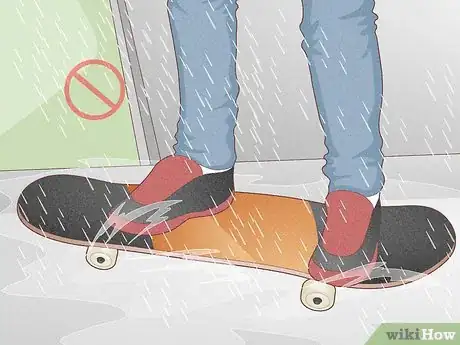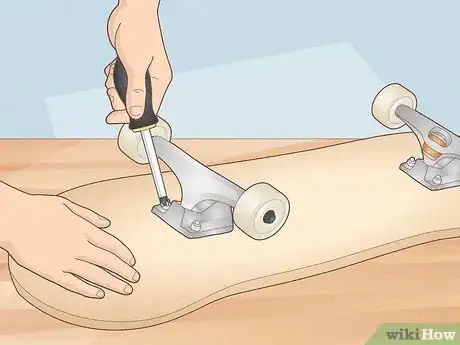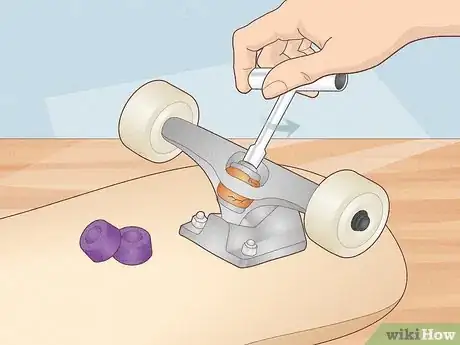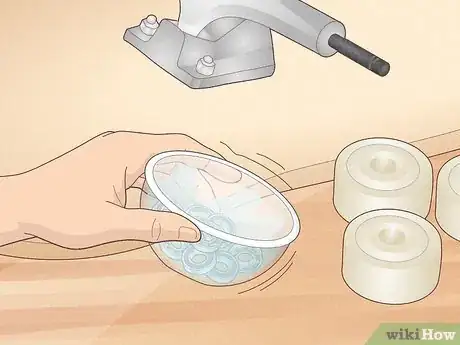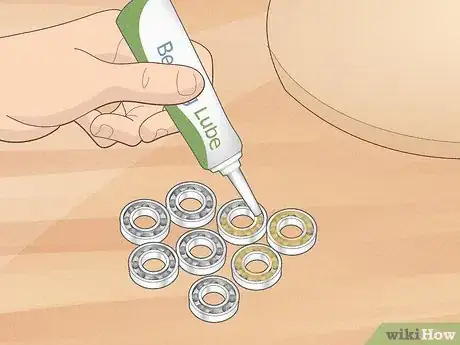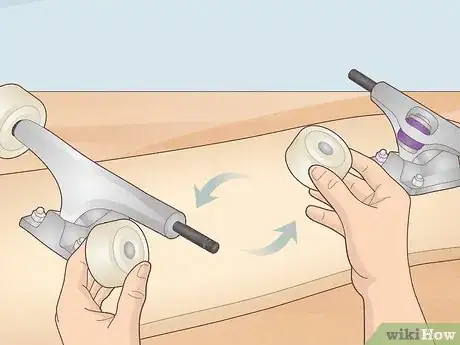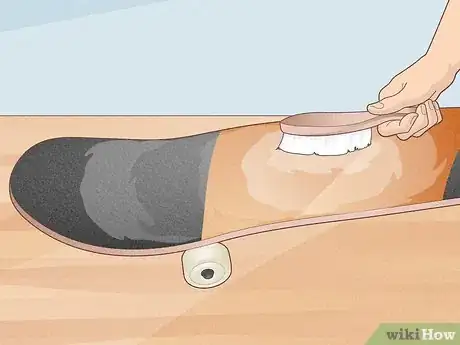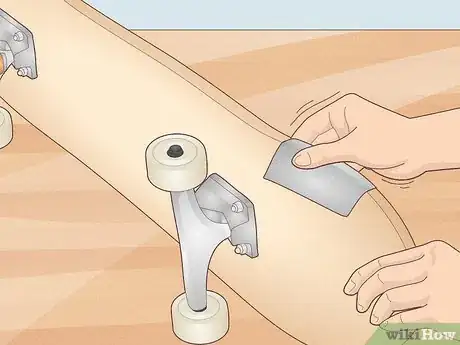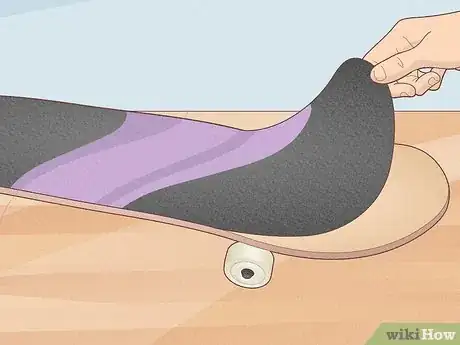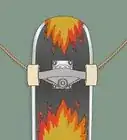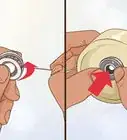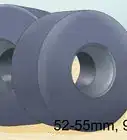This article was co-authored by Jon Depoian. Jon Depoian is a Skateboarding Instructor and the Owner of Intro2Skateboarding, an organization based in Orange County, California that provides professional private, home-school, after-school, birthday party, and summer camp skateboard lessons for beginners and experienced skateboarders alike. Jon has over 21 years of skateboarding experience and over 10 years of skateboard instruction experience. He also has extensive experience producing street skateboarding videos and skating competitions.
There are 8 references cited in this article, which can be found at the bottom of the page.
This article has been viewed 10,820 times.
Proper skateboard maintenance prolongs the life of your board. With just a few cheap tools and products, pretty much anybody can maintain a skateboard. Follow the tips on this list to keep your skateboard working well until you eventually ride it into the ground. Your board (and your wallet) will appreciate it!
Steps
Keep your skateboard dry.
-
Moisture is bad for the bearings, trucks, bolts, and deck. Avoid skateboarding when it’s raining or when the ground is wet. Always store your skateboard in a dry place and try to keep it covered if you’re carrying it outside when it’s raining.[1] X Research source
- If your board’s deck gets too wet, it can get waterlogged and permanently lose its natural “pop.”
- Water can cause your board’s bolts, bearings, and screws to rust.
Tighten the hardware after every few uses.
-
Screws, nuts, and bolts can come loose and make it dangerous to skate. After every few skate sessions, use a screwdriver and a wrench to make sure the screw-top nuts and bolts that hold your board’s trucks in place are all the way tight. Check all the nuts holding your wheels onto the axles as well.[2] X Research source
- If the wheels are loose on your axles, for example, one of them could fly off while you’re skating and cause an unexpected wipeout!
- When you're tightening your trucks, turn your wrench in small increments—maybe a quarter of a turn on each side.[3]
X
Expert Source

Skateboarding Instructor Expert Interview. 5 June 2020.
Replace bushings when they break down.
-
The bushings in your board’s trucks can wear out over time. All that leaning on your deck and turning is hard on them! Inspect the bushings regularly for signs of wear like cracks, crumbling, or squishing. If you see any bad ones, unscrew the nuts and bolts that hold them onto your trucks and swap them out for new ones.[4] X Research source
- There are two bushings on each truck, a top bushing and a bottom bushing. You have to remove the truck from the kingpin, or the central bolt that connects the truck to the baseplate, to access the bottom bushing.
Clean the bearings every 3 months.
-
Dirty bearings prevent the wheels from spinning smoothly. Use a skate tool to unscrew the bolts that hold your board’s wheels in place and take all the wheels off the axles. Then, remove the bearings from the wheels.[5] X Expert Source

Skateboarding Instructor Expert Interview. 5 June 2020. Submerge the bearings in denatured alcohol in a small lidded container and shake the container for 30 seconds. Take the bearings out and let them air dry for 15 minutes.[6] X Research source- Remember which wheel came from which axle when you take them off.
- Denatured alcohol is more commonly known as methylated spirits in some countries.
Lubricate the bearings every 3 months.
-
This is the final step to keeping them spinning perfectly. After you clean the bearings and they are dry, squeeze 2 drops of bearing lube into each bearing. Hold each bearing between your fingers and give the outer ring a spin to evenly distribute the lube. Reassemble the wheels, put them back on your board, and you’re ready to ride![7] X Research source
- Some bearings have a bearing seal or shield on one side. Make sure you squeeze the lubricant into the side of the bearing where you can see the little ball bearings inside the rings.
- Use a Teflon-based lubricant designed for skateboard bearings or bike chains—a silicone-based product like WD40 will get sticky as it dries.[8]
X
Expert Source

Skateboarding Instructor Expert Interview. 5 June 2020.
Rotate the wheels every 3 months or sooner.
-
This evens out the wear on your board’s wheels. The best time to do this is after you clean your bearings. Put each wheel back onto the axle diagonal from the axle you took it off of.[9] X Research source
- For example, put the wheel you took off the front right axle on the back left axle.
- If you ride every day or very often, you might want to rotate your wheels as often as every 2 weeks or so to keep them wearing out more evenly.
Change the wheels if they start to deteriorate.
-
A fresh set of wheels keeps your board performing as you want it to. Watch out for signs that your wheels are shot, such as if they are uneven in size or have flat spots on them. Remove the old wheels with a skate tool and put a brand new set on.[10] X Research source
- Besides rotating your wheels regularly, there are other things you can do to make them last longer. For example, try to skate on smooth surfaces and avoid doing too many power slides.
Scrub your deck if it’s really dirty.
-
You really only have to do this for cosmetic purposes. To get started, dip a nylon-bristled brush in some warm, soapy water and scrub the grip tape in circular motions. Next, flip your board over and wipe the underside of the deck clean with a soft sponge and clean water. Quickly and thoroughly dry the deck off with a clean towel.[11] X Research source
- If you want to be really thorough, remove the trucks before you clean the underside of the deck to clean the areas they attach to. If you do so, wait a couple of hours before you reattach them to make sure the deck is totally dry.
Sand the edges of the deck if they’re splintering.
-
This helps prevent chipping, especially near the board’s nose and tail. Inspect all the edges of your board periodically for rough patches, which are where chips are most likely to occur. Turn your board on its side on a flat surface, with the rough patch facing up. Sand back and forth along the rough edge, applying moderate pressure, until it feels smooth again.[12] X Research source
- Use a sandpaper with a grit somewhere in the range of 120 to 220. If you use a sandpaper with a lower grit, you might end up taking off too much material and deforming your board.
Replace your grip tape when it wears out.
-
New grip tape can bring a perfectly good old deck back to life. Carefully, use a utility knife to scrape under the edges of the grip tape and loosen it. Then, use your hands or a pair of pliers to peel all the grip tape off the deck. Stick a new piece of grip tape on the deck and trim around the edges with your utility knife.[13] X Research source
- If it’s hard to peel the grip tape up, heat it up with a hair dryer to loosen the adhesive.
- If the edges of your grip tape start to peel up but you don’t want to replace it all yet, just use a utility knife to trim the peeling parts off.
You Might Also Like
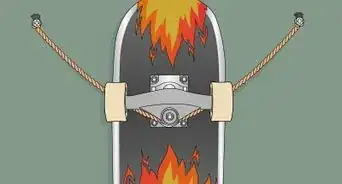
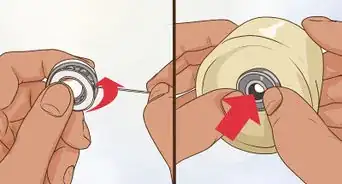
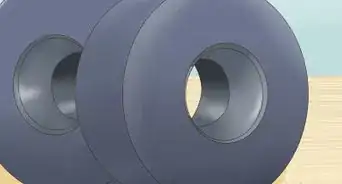
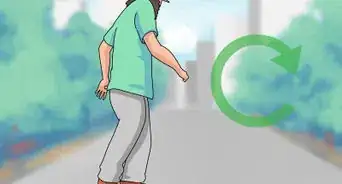
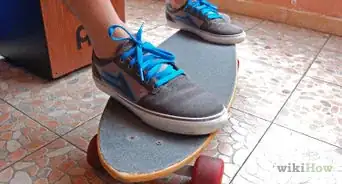
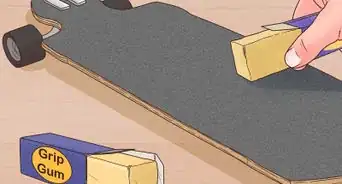
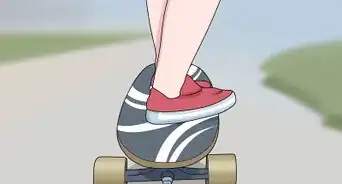
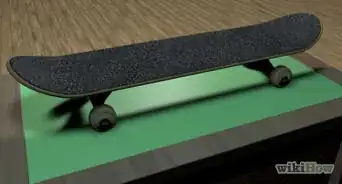
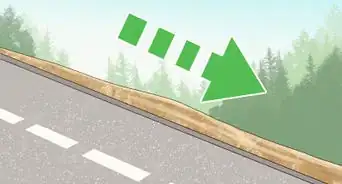
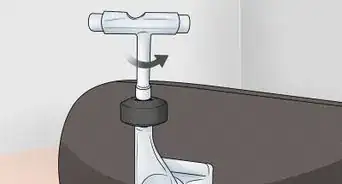
References
- ↑ https://www.skateboardershq.com/how-to-keep-your-skateboard-in-good-condition/
- ↑ https://www.skateboardershq.com/how-to-keep-your-skateboard-in-good-condition/
- ↑ Jon Depoian. Skateboarding Instructor. Expert Interview. 5 June 2020.
- ↑ https://www.skateboardershq.com/how-to-keep-your-skateboard-in-good-condition/
- ↑ Jon Depoian. Skateboarding Instructor. Expert Interview. 5 June 2020.
- ↑ https://www.youtube.com/watch?v=MLXCkB0AUlU&t=80s
- ↑ https://www.youtube.com/watch?v=MLXCkB0AUlU&t=200s
- ↑ Jon Depoian. Skateboarding Instructor. Expert Interview. 5 June 2020.
- ↑ https://www.youtube.com/watch?v=MLXCkB0AUlU&t=255s
About This Article

